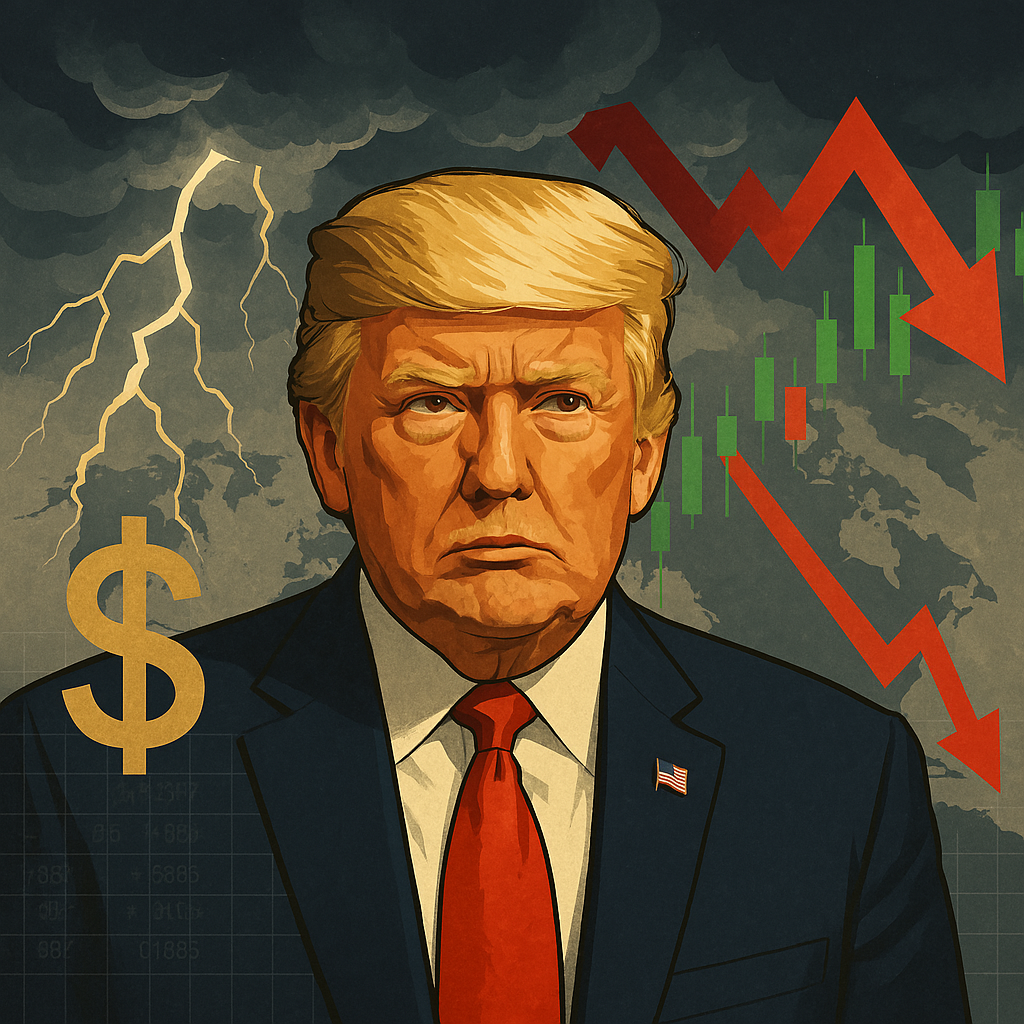For decades, American presidents have treated financial stability as sacred. Markets must be calmed. Policy shifts must be signaled well in advance. Investors must be reassured that Washington won’t do anything rash.
Donald Trump does not govern by these rules.
His second term has ushered in an economic storm unlike anything seen in modern history. Global markets are whiplashing. The dollar is slipping. Investors are scrambling to keep up with a White House that seems less concerned with stability than with breaking things—on purpose.
This time, the chaos isn’t just collateral damage. It’s the plan.
Trump’s Economic War on the Global Order
For thirty years, U.S. economic policy has operated on a basic assumption: the more integrated the global economy, the better. Trade deals. Open markets. Financial interdependence. Even when presidents clashed over policy, they agreed that America’s strength lay in being the center of a vast, interconnected economic web.
Trump has torched that playbook.
His second-term tariff blitz is not a bargaining chip. It is a declaration of war on the economic status quo. A 10 percent tariff on all imports. Special 25, 34, 46—even 60 percent—duties on Canada, Mexico, China, Vietnam, and the European Union. No backroom negotiations. No temporary exemptions. The message to global businesses is clear: adapt or get crushed.
Markets, unsurprisingly, hate this. Inflation is rising as import costs soar. American businesses that rely on foreign parts are suddenly faced with impossible choices: eat the higher costs, pass them to customers, or pull manufacturing back to the U.S. at a scale they aren’t ready for.
Corporations once willing to absorb Trump’s economic swings in exchange for tax cuts and deregulation are now realizing this isn’t just another trade skirmish. The volatility isn’t going away.
Why Trump Wants a Weaker Dollar—And Why It Might Backfire
Trump has been railing against a strong U.S. dollar for years. In his mind, it’s a rigged game—other countries manipulate their currencies to keep their exports cheap, while the U.S. gets stuck with an artificially inflated dollar that kills American manufacturing.
He isn’t just complaining anymore. He’s actively engineering a weaker dollar through a mix of tariff-induced inflation, soaring federal deficits, and relentless attacks on the Federal Reserve.
A weaker dollar makes U.S. exports cheaper, which could theoretically boost domestic industry. But this isn’t 1985. America isn’t a manufacturing powerhouse anymore. It’s a consumption-driven economy, and a falling dollar makes everything more expensive.
The other, far bigger risk? Confidence in U.S. financial stability erodes. Foreign investors start looking elsewhere. The global system that has relied on the dollar as its bedrock for decades suddenly isn’t as certain. And once that uncertainty takes root, it doesn’t go away.
Market Volatility: Trump’s Weapon of Choice
Every modern president has, at some point, feared a market crash. Trump is the first to use one as leverage.
He has realized that markets react instantly to his every move. A tariff announcement sends stocks plunging. A single tweet about “progress” with China sends them roaring back. This isn’t a bug in the system—it’s his greatest source of power.
Trump’s approach to financial markets in his second term is unlike anything the world has seen. Instead of offering stability, he creates instability and uses it as a form of control.
Investors? They’ll hold their breath and wait. Business leaders? They’ll keep lobbying for an off-ramp that never comes. The Federal Reserve? It’s now a pawn in the broader game of monetary brinkmanship.
But volatility is a dangerous weapon. Used too often, it loses its impact. At a certain point, companies stop investing, markets stop recovering, and investors stop playing the game. And when that happens, Trump won’t be able to tweet his way out of it.
The Real Endgame: Is the U.S. About to Lose Its Financial Crown?
Forget the tariffs. Forget the Fed fights. Forget the daily stock market swings. The biggest risk Trump is taking isn’t with trade policy or interest rates.
It’s with the future of U.S. financial dominance.
For nearly a century, the U.S. dollar has ruled the global economy. It is the currency of trade. The currency of debt. The currency that governments around the world hold in their reserves because it is seen as stable, reliable, and unshakable.
Trump is testing that assumption like no president before him.
If markets start seeing U.S. policy as erratic, the shift away from the dollar won’t happen overnight. But cracks will form. China will push its own currency as a trade alternative. European nations will move toward self-sufficiency. Global institutions will begin building systems that do not rely on American financial leadership.
And once that shift begins, it will be nearly impossible to stop.
Is This the Economic Revolution Trump Wants—Or the One He Can’t Control?
Trump is playing a game few leaders have dared attempt. He is actively destabilizing the financial order, convinced that it will ultimately bend in his favor.
Maybe it will. Maybe the global economy will realign in ways that favor U.S. industry. Maybe companies will have no choice but to manufacture in America. Maybe a weaker dollar will finally close the trade gap.
Or maybe this is the moment where U.S. financial dominance starts slipping away.
A president can dictate tariffs. He can pressure the Fed. He can create chaos in the markets and force global corporations to adjust.
What he cannot do is control how the world reacts. If Trump is wrong—if this gamble backfires—the U.S. won’t just be dealing with higher prices and nervous investors. It will be dealing with something far bigger.
A global economy that is learning, for the first time in decades, how to live without American financial leadership.
